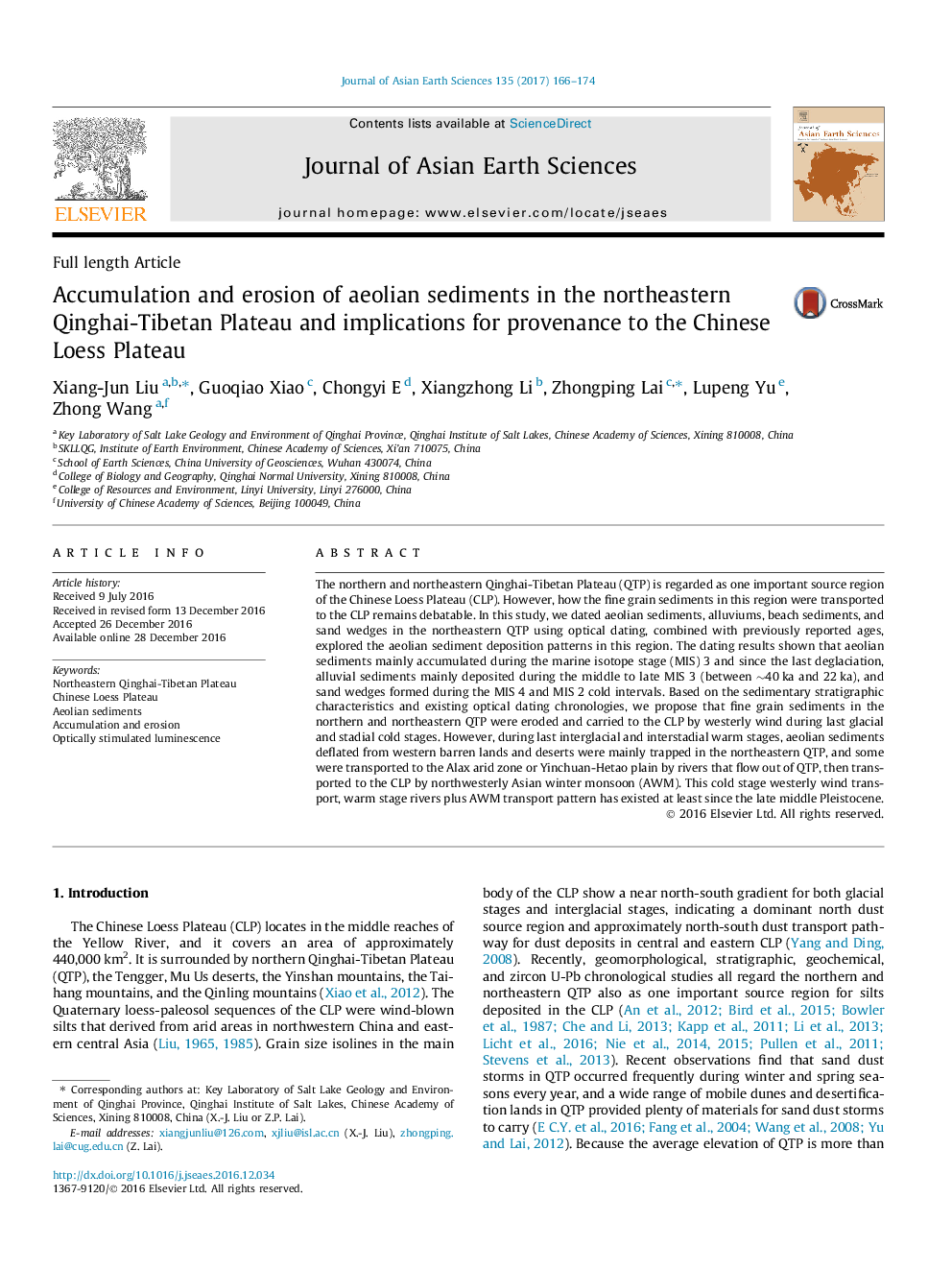| کد مقاله | کد نشریه | سال انتشار | مقاله انگلیسی | نسخه تمام متن |
|---|---|---|---|---|
| 5786110 | 1640336 | 2017 | 9 صفحه PDF | دانلود رایگان |

- Northeastern Qinghai-Tibetan Plateau (NEQTP) suffered severe erosion during cold stages in glaciation.
- Fine sediments conveyed from NEQTP to Chinese Loess Plateau (CLP) mainly occurred at cold stages and by westerly wind.
- Material transport pattern from NEQTP to CLP is different between cold and warm stages.
The northern and northeastern Qinghai-Tibetan Plateau (QTP) is regarded as one important source region of the Chinese Loess Plateau (CLP). However, how the fine grain sediments in this region were transported to the CLP remains debatable. In this study, we dated aeolian sediments, alluviums, beach sediments, and sand wedges in the northeastern QTP using optical dating, combined with previously reported ages, explored the aeolian sediment deposition patterns in this region. The dating results shown that aeolian sediments mainly accumulated during the marine isotope stage (MIS) 3 and since the last deglaciation, alluvial sediments mainly deposited during the middle to late MIS 3 (between â¼40Â ka and 22Â ka), and sand wedges formed during the MIS 4 and MIS 2 cold intervals. Based on the sedimentary stratigraphic characteristics and existing optical dating chronologies, we propose that fine grain sediments in the northern and northeastern QTP were eroded and carried to the CLP by westerly wind during last glacial and stadial cold stages. However, during last interglacial and interstadial warm stages, aeolian sediments deflated from western barren lands and deserts were mainly trapped in the northeastern QTP, and some were transported to the Alax arid zone or Yinchuan-Hetao plain by rivers that flow out of QTP, then transported to the CLP by northwesterly Asian winter monsoon (AWM). This cold stage westerly wind transport, warm stage rivers plus AWM transport pattern has existed at least since the late middle Pleistocene.
Journal: Journal of Asian Earth Sciences - Volume 135, March 2017, Pages 166-174